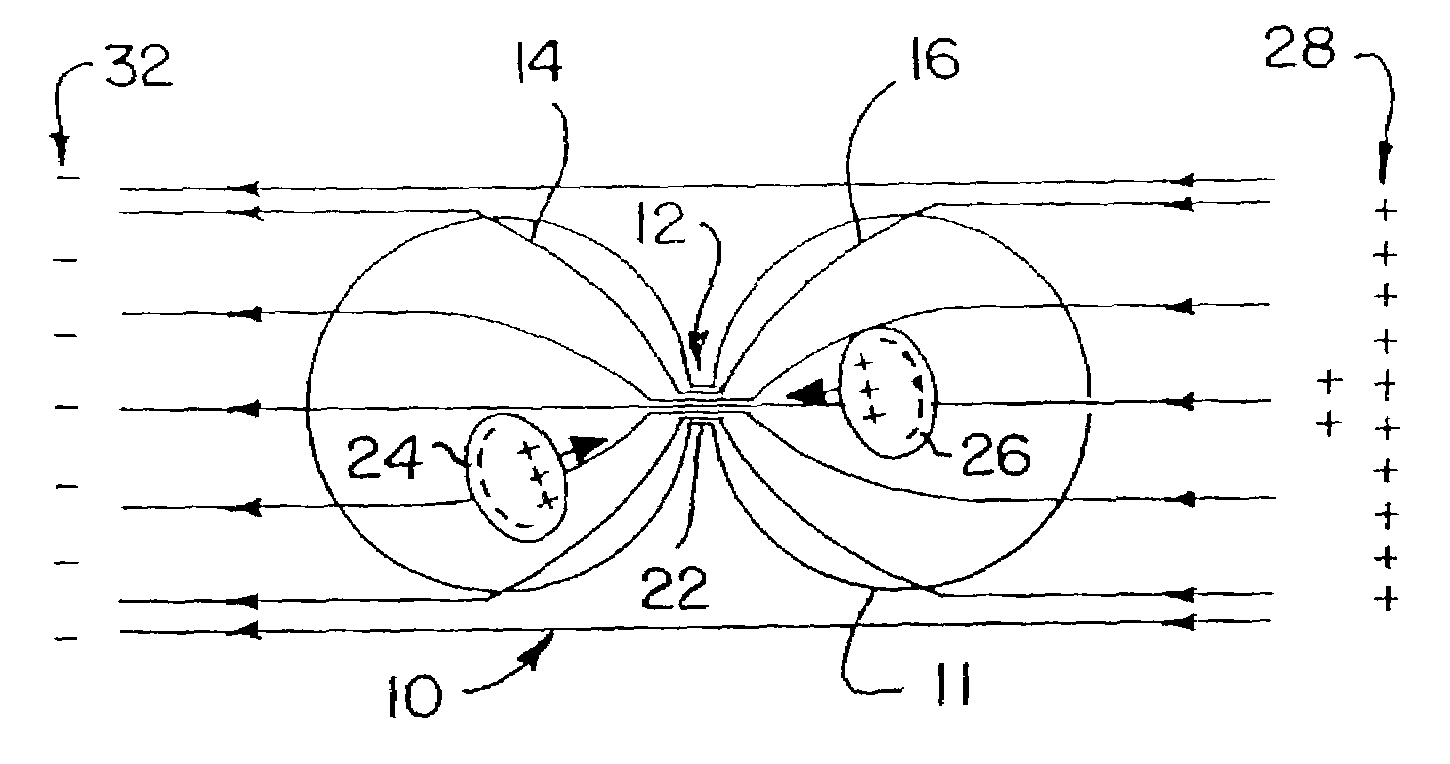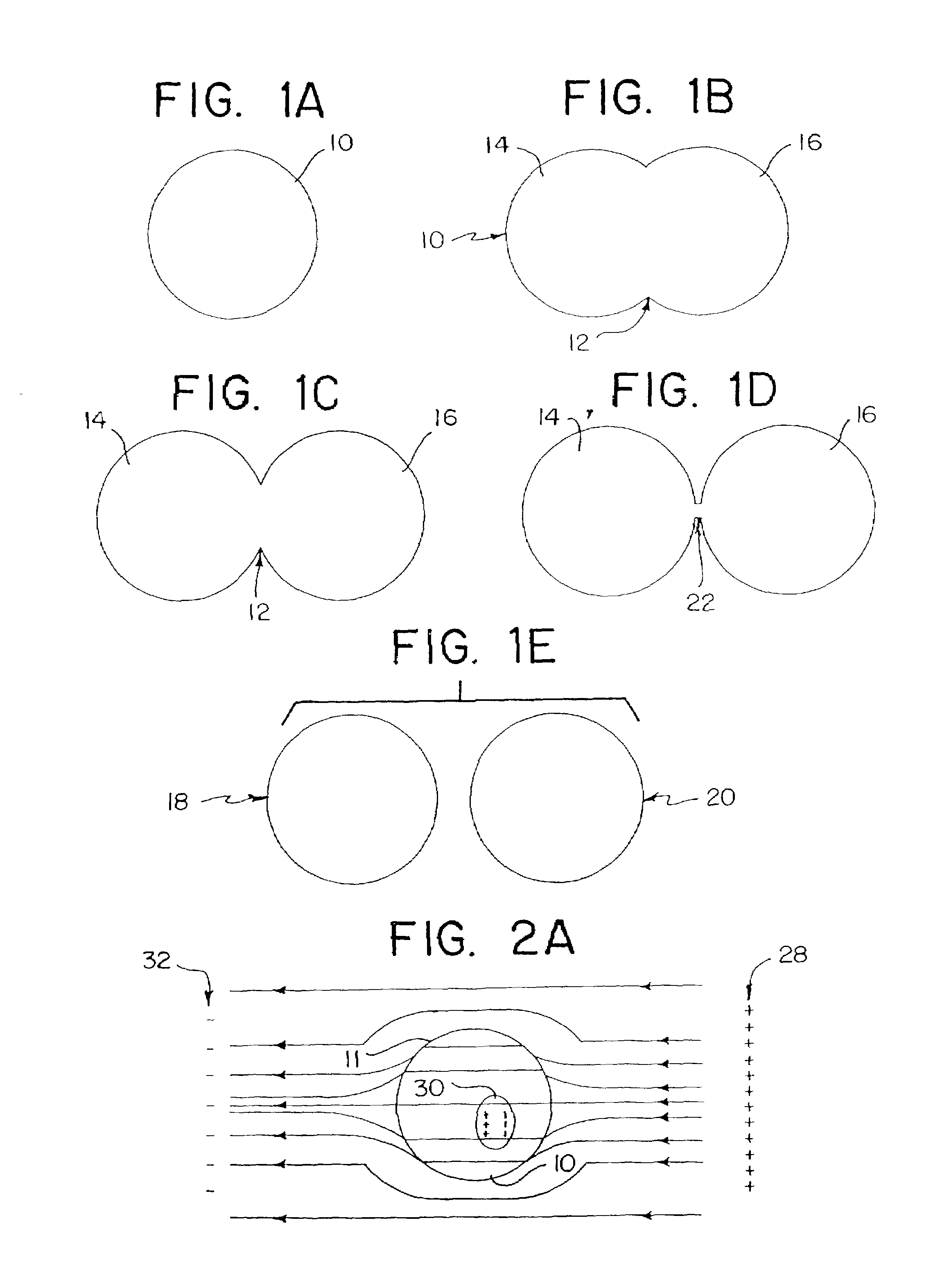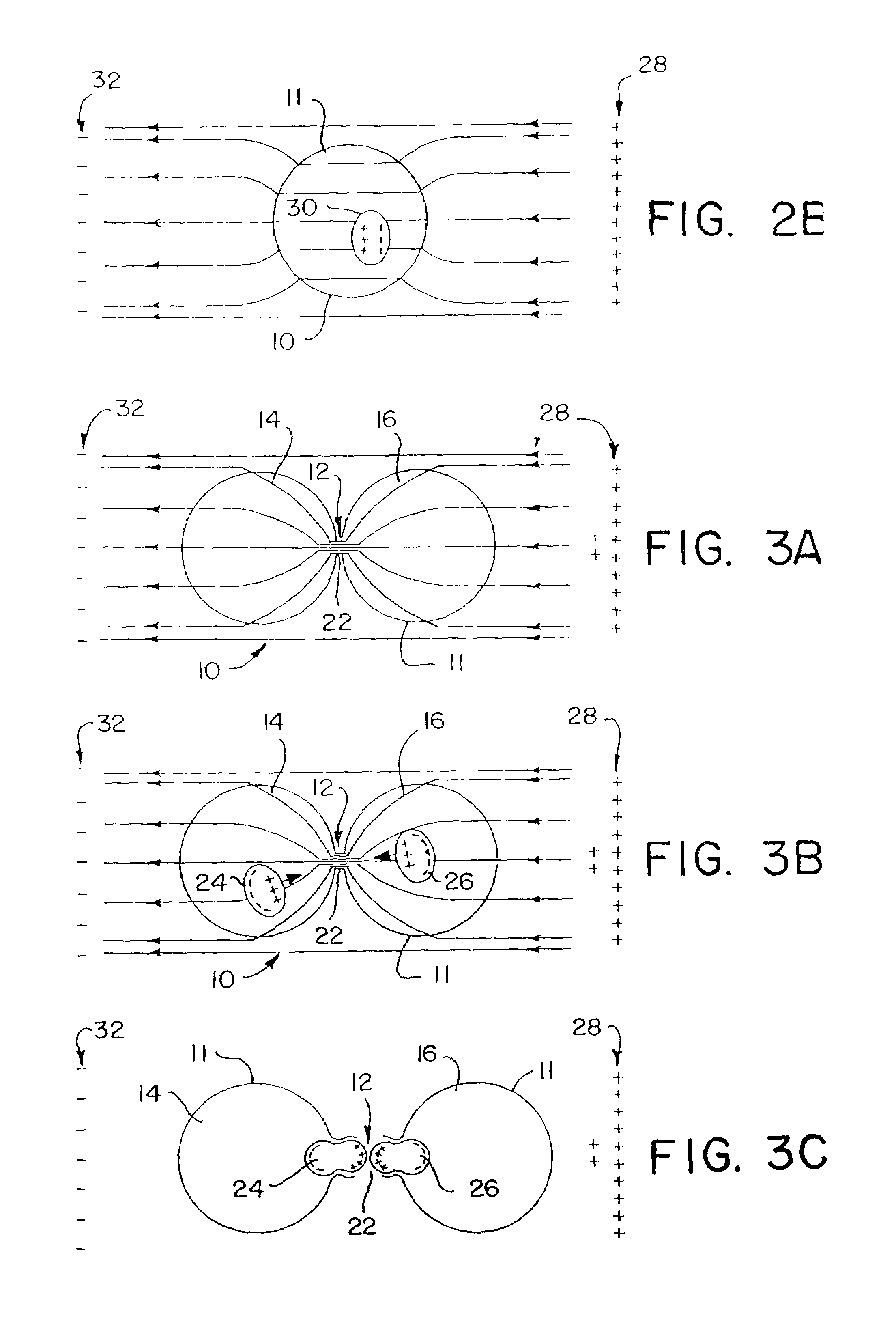Method and apparatus for destroying dividing cells
- Summary
- Abstract
- Description
- Claims
- Application Information
AI Technical Summary
Benefits of technology
Problems solved by technology
Method used
Image
Examples
Embodiment Construction
[0042]Reference is made to FIGS. 1A–1E which schematically illustrate various stages of a cell division process. FIG. 1A shows a cell 10 at its normal geometry, which may be generally spherical (as shown in the drawings), ellipsoidal, cylindrical, “pancake” like, or any other cell geometry, as is known in the art. FIGS. 1B–1D show cell 10 during different stages of its division process, which results in the formation of two new cells 18 and 20, shown in FIG. 1E.
[0043]As shown in FIGS. 1B–1D, the division process of cell 10 is characterized by a slowly growing cleft 12 which gradually separates cell 10 into two units, namely, sub-cells 14 and 16, which eventually evolve into new cells 18 and 20 (FIG. 1E). As shown specifically in FIG. 1D, the division process is characterized by a transient period during which the structure of cell 10 is basically that of the two sub-cells 14 and 16 interconnected by a narrow “bridge”22 containing cell material (cytoplasm surrounded by cell membrane)...
PUM
 Login to View More
Login to View More Abstract
Description
Claims
Application Information
 Login to View More
Login to View More - R&D
- Intellectual Property
- Life Sciences
- Materials
- Tech Scout
- Unparalleled Data Quality
- Higher Quality Content
- 60% Fewer Hallucinations
Browse by: Latest US Patents, China's latest patents, Technical Efficacy Thesaurus, Application Domain, Technology Topic, Popular Technical Reports.
© 2025 PatSnap. All rights reserved.Legal|Privacy policy|Modern Slavery Act Transparency Statement|Sitemap|About US| Contact US: help@patsnap.com



